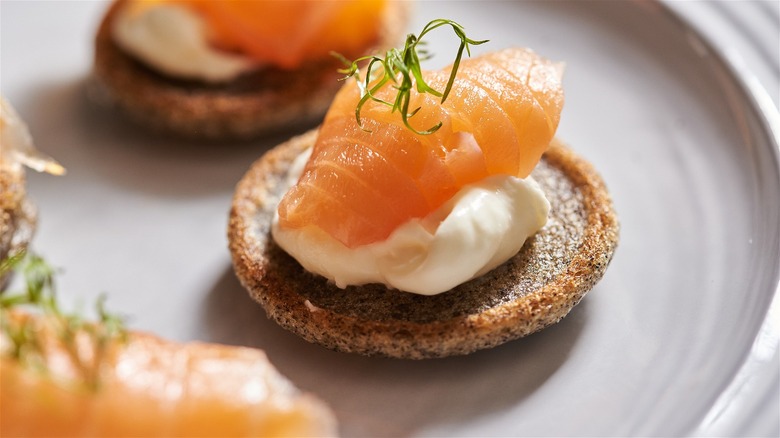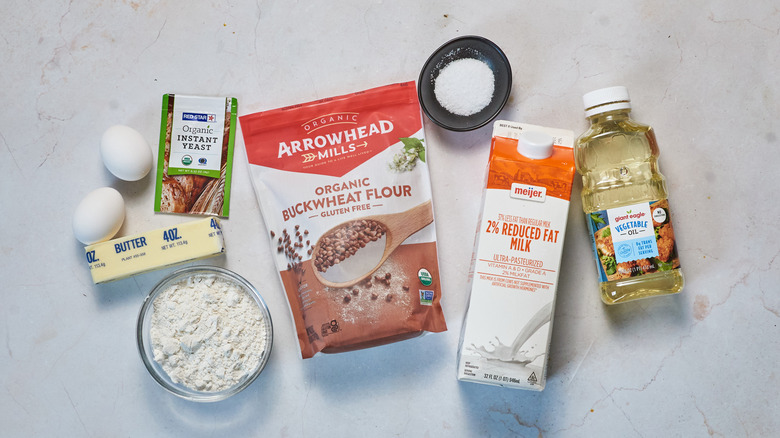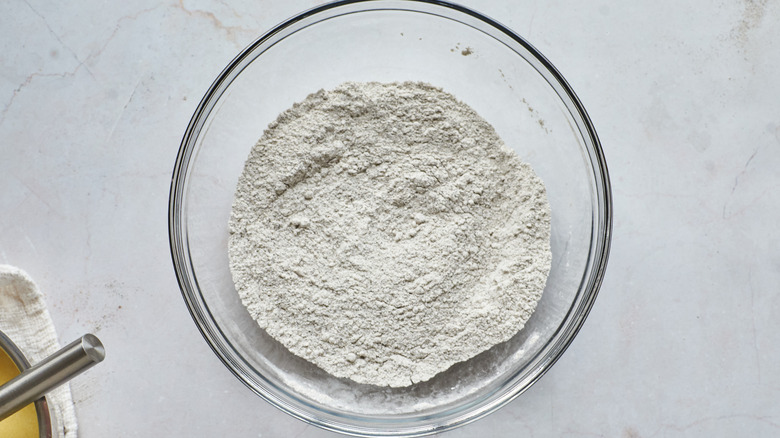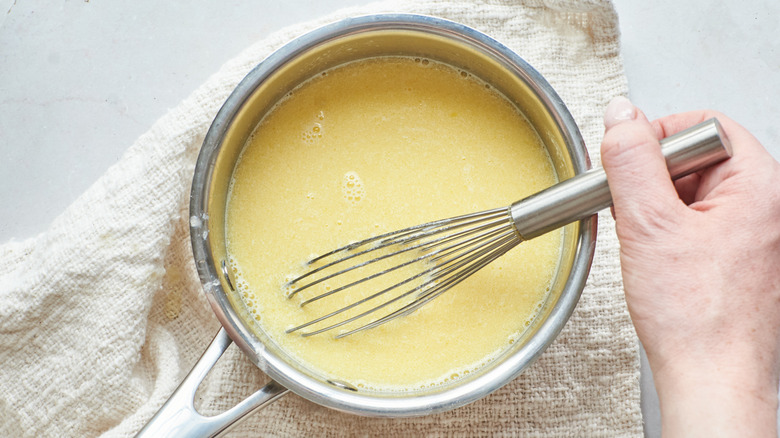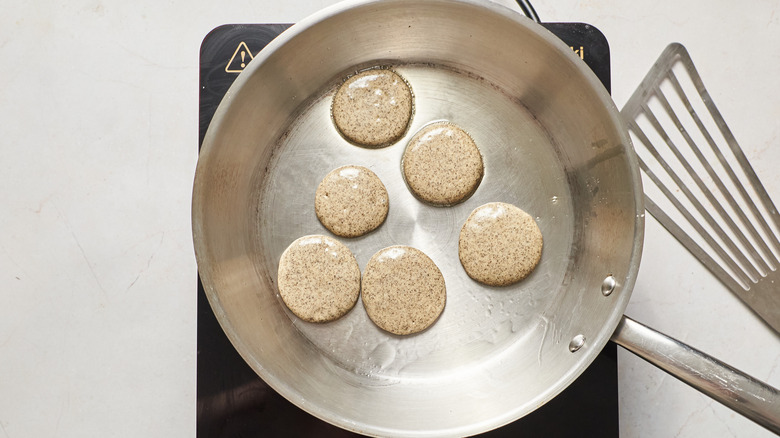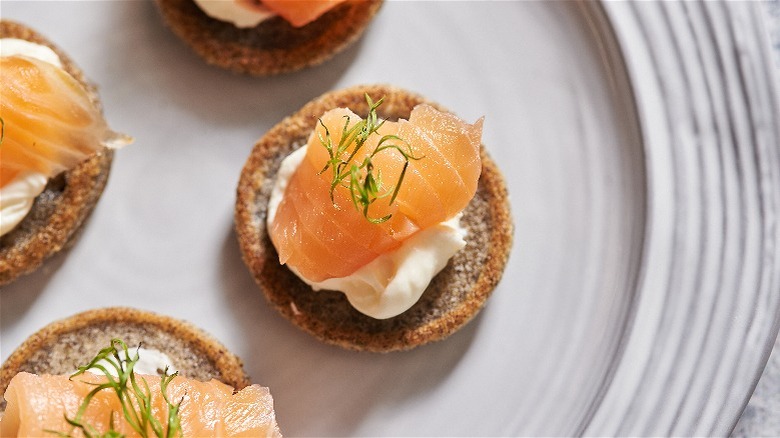Homemade Blini (Russian Pancakes) Recipe
Blini have a long history in Russian tradition, having been eaten even before the introduction of Christianity as a celebration of the start of spring. With the introduction of Christianity in Russia, the pagan holiday transformed but the blini remained. Sometimes enjoyed as full, traditional-style pancakes, blini are most typically served as small discs with toppings like crème fraîche and caviar. The one-bite finger food became a popular appetizer option not only during celebrations in Russia but also at high-end restaurants around the world, namely for their gorgeous appearance.
The small pancakes are made with buckwheat and leavened with yeast, so they take on a darker color and higher rise than a traditional American pancake. The taste and texture are earthier with a gritty, crispy texture perfect for adding creamy toppings. Developer Michelle McGlinn shares her favorite blini recipe, which uses a blend of all-purpose and buckwheat flours for a smooth, even texture with just a bit of nuttiness. After letting the yeast rise, the blini cook quickly, making a large batch of deliciously fluffy pancakes. Skip the cheese and crackers for your next hosting gig and your guests will be seriously impressed.
Everything you need for homemade blini
Most of the ingredients in blini are similar to the pancake batters you're familiar with: All-purpose flour, milk, eggs, salt, butter. What makes blini a little different is the buckwheat flour and yeast. Buckwheat flour is found in the baking section near the specialty flours and is brownish-gray in appearance. It is traditional to use buckwheat in blini, but if you are having a hard time finding it, you can also substitute the buckwheat with all-purpose. You'll also need instant yeast, also found in the baking aisle, in order to give the blini that fluffy, risen texture. You can use instant or active dry; either yeast will work here, but if using active dry, you'll need to combine the yeast and milk together first (more on this below). Lastly, you'll need a small amount of oil to grease the skillet with.
Combine the dry ingredients
Like most batters, this recipe requires the dry ingredients be mixed together first, before the wet ingredients are added. Gently stir together the all-purpose flour, buckwheat, yeast, and salt. You'll notice the recipe doesn't quite call for a whole packet of yeast; you can store the remaining yeast in an airtight container in the refrigerator for later use (like for more blini). Instant yeast doesn't need to be activated with liquid in order to work, so if using instant yeast, add it directly to the dry ingredients.
Activating the yeast
If you are using active dry yeast, set aside an extra 10 minutes to proof the yeast (that is, make sure it is alive). Warm the milk, then add the yeast and cover the bowl. In about 10 minutes, the yeast should be bubbling in the milk, creating a frothy layer on top. Add the melted butter and eggs and continue with the recipe as written.
If using instant yeast as in the recipe, melt the butter with the milk, add the eggs, then combine with the dry ingredients. This removes a few steps and activates the yeast instantly (hence the name). You'll still need to let the yeast rise, so cover the bowl and let the yeast work its magic for around 90 minutes.
Cooking the blini
When the batter is ready, it will be puffy, thick, and a little foamy. It won't look quite like proofed bread — there's only a teaspoon of yeast, after all, so the batter will still be very pliable. To fry the blini, very lightly grease a nonstick skillet (if you don't have one, keep the oil handy). You want the skillet to have a thin layer of grease, no more, no less: If you add a lot of oil, the blini will fry and crisp, and if you don't grease at all, the blini will burn. If you have cooking spray, this is a good time to use it.
Use a ladle, measuring cup, or squirt bottle to add about 2 tablespoons worth of batter to the warm skillet. Like pancakes, finding your groove with blini might require some testing. You want the heat low, but not so low that the blini never cooks. Play around with the heat and oil with your first batch, finding your sweet spot. From there, you can fill the skillet with blini and cook them for about 6 to 8 minutes each.
Serving and storing blini
The most traditional toppings for blini are sour cream, caviar, smoked salmon, and dill. If serving for a holiday or special occasion, try serving the blini with caviar. Our developer Michelle serves blini with crème fraîche and smoked salmon, topped with a sprig of dill as pictured. These make excellent poppable party appetizers, but also fun breakfasts, swapping the crème fraîche for cream cheese and the dill for everything-bagel seasoning. The blini are softest and most flavorful when warm, but can be stored in the refrigerator and eaten as quick, cold snacks any time. Want to keep the Russian cuisine going? Serve the blini with Russian potato salad and pelmeni for a full Slavic feast.
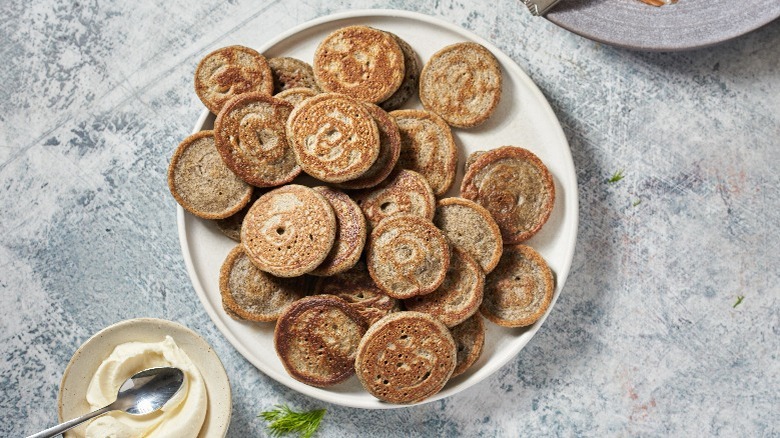
- 1 cup 2% milk
- 3 tablespoons butter
- 2 large eggs
- 1 cup all-purpose flour
- ½ cup buckwheat flour
- 1 teaspoon instant yeast
- 1 teaspoon Kosher salt
- Vegetable oil, as needed
- In a large bowl, combine flour, buckwheat, yeast, and salt.
- In a small saucepan over medium heat, warm milk and butter, stirring constantly until butter is melted. Do not allow milk to boil.
- Remove from the heat and whisk eggs into the warmed milk. Pour mixture into the flours, stirring to combine. Mix, like a pancake batter, until no lumps remain. Do not overmix.
- Cover the mixture with a towel or plastic wrap and keep in a warm location for 1 ½ hours. The mixture will foam and thicken.
- To cook the blini, lightly spray a nonstick pan with oil and heat over medium low heat. Once hot, use a measuring cup or squeeze bottle to add 2 tablespoons of batter in a circular shape into the skillet. For bite-size blini, the circles should be about 2 inches wide.
- Cook until blinis are golden brown, about 3 to 4 minutes, then flip and brown the other side. If blinis aren't browning, turn the heat up slightly. If blini are too dark, oil the skillet again or adjust the heat.
- Serve warm with toppings like crème fraîche and smoked salmon or caviar.
| Calories per Serving | 36 |
| Total Fat | 1.7 g |
| Saturated Fat | 0.8 g |
| Trans Fat | 0.0 g |
| Cholesterol | 13.4 mg |
| Total Carbohydrates | 4.2 g |
| Dietary Fiber | 0.3 g |
| Total Sugars | 0.4 g |
| Sodium | 37.7 mg |
| Protein | 1.2 g |
